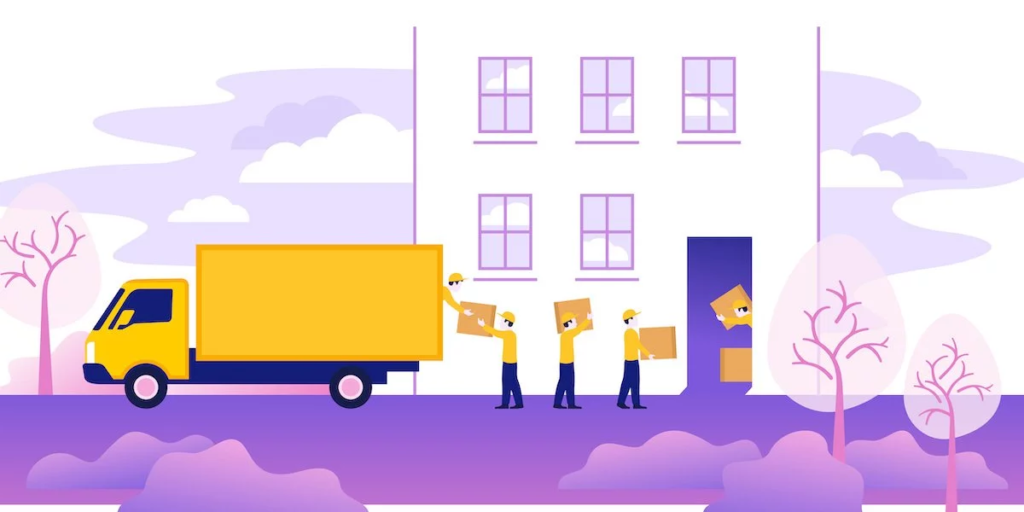In the fast-paced world of food logistics, maintaining the right temperature from farm to table is more than a requirement; it’s a science. The integrity of perishable items hinges on precise temperature control, making it a critical aspect of food safety and quality. As the global supply chain stretches further, the challenge of keeping food items fresh over long distances and through varied climates has spurred innovation. This article delves into the cutting-edge solutions reshaping how we preserve temperature in food transport, ensuring that your favorite foods arrive fresh, safe, and delicious. Among these solutions, Divine Enterprises offers state-of-the-art Transportation Temperature Controlled services, designed to meet the rigorous demands of modern food logistics with reliability and efficiency.

Innovative Temperature Control Technologies
Advanced Cooling Systems
Gone are the days when traditional refrigeration was the only option for transporting perishable goods. Today, the industry is witnessing the emergence of advanced cooling systems that offer unprecedented efficiency and reliability. These systems leverage novel refrigerants and cooling methods, significantly reducing the energy consumption and environmental impact of food transport. For instance, cryogenic cooling, which utilizes liquid nitrogen or carbon dioxide, offers rapid cooling capabilities, essential for preserving the freshness of highly perishable goods. Through real-world applications, such as the transcontinental shipment of seafood, these advanced systems have demonstrated their ability to maintain optimal temperatures, even in the most challenging conditions.
Smart Containers and Packaging Solutions
The role of containers and packaging in temperature preservation cannot be overstated. Innovations in this area are focused on smart, responsive materials that adapt to temperature changes, ensuring the environment inside the package remains constant. These materials include phase change materials (PCMs) that absorb or release heat to maintain a specific temperature range. Moreover, the push towards sustainability has led to the development of biodegradable packaging solutions that not only protect the product but also the planet. The integration of these smart packaging solutions into the logistics chain represents a significant leap forward in our ability to keep food fresh for longer.
Integrating IoT and AI in Food Logistics
IoT Devices for Real-Time Monitoring
The Internet of Things (IoT) has been a game-changer for many industries, and food logistics is no exception. IoT devices, embedded within containers or packaging, provide real-time data on the temperature and condition of the food during transit. This level of monitoring allows for immediate action should any part of the supply chain experience unexpected temperature fluctuations, significantly reducing the risk of spoilage. For example, a shipment of berries can be closely monitored for temperature and humidity levels, with adjustments made on-the-fly to ensure they arrive in perfect condition.
AI-Driven Predictive Analytics
Artificial Intelligence (AI) takes the capabilities of IoT devices a step further by not just monitoring conditions but also predicting potential issues before they arise. Through the analysis of vast datasets, AI algorithms can identify patterns and predict possible disruptions in the supply chain, allowing for preemptive action to avoid spoilage. This predictive approach is particularly valuable in anticipating the effects of weather changes or logistical delays on the shipment’s temperature. By staying one step ahead, food logistics companies can ensure the highest standards of food safety and quality.
FAQ and Answers
- What are the main challenges in maintaining temperature control during food transport?
Maintaining temperature control is challenged by external temperature fluctuations, mechanical failures, and the logistical complexities of long-distance and international shipping. Ensuring that all parts of the supply chain are equipped to maintain the required temperature ranges is a complex orchestration involving technology, human oversight, and robust infrastructure.
- How do advanced cooling systems differ from traditional refrigeration?
Advanced cooling systems offer enhanced efficiency, reduced environmental impact, and greater flexibility in temperature regulation compared to traditional refrigeration. They often employ innovative refrigerants and cooling methods, such as cryogenic cooling, which provide rapid and precise temperature control suitable for a wide range of perishable goods.
- Can IoT devices really make a difference in ensuring food safety during transport?
Absolutely. IoT devices enable real-time monitoring and control of the conditions within transport containers, providing immediate data on temperature, humidity, and other critical factors. This continuous stream of information allows for quick responses to any issues, significantly enhancing the safety and quality of food during transit.
- Are AI-driven logistics solutions cost-effective for small-scale food producers?
While the initial investment in AI-driven logistics solutions can be significant, the long-term benefits, including reduced waste, enhanced efficiency, and improved product quality, can lead to substantial cost savings. Moreover, many AI solutions are becoming more accessible and scalable, making them a viable option for small-scale producers looking to compete in broader markets.
- What role do sustainable packaging solutions play in temperature control?
Sustainable packaging solutions are designed to be effective in temperature control while minimizing environmental impact. Materials like biodegradable PCMs and innovative insulating materials not only maintain the desired temperature but also reduce the carbon footprint of packaging. As the industry moves towards a more sustainable future, these packaging solutions are becoming integral to maintaining temperature control in an eco-friendly manner.
In the dynamic field of food logistics, the marriage of technology and ingenuity continues to push the boundaries of what’s possible in temperature preservation. From the depths of the ocean to the vastness of the skies, ensuring that food remains fresh and safe is an ongoing challenge that drives innovation. As we look to the future, the integration of advanced technologies and sustainable practices promises not only to overcome the logistical challenges of today but also to redefine the possibilities of tomorrow.


